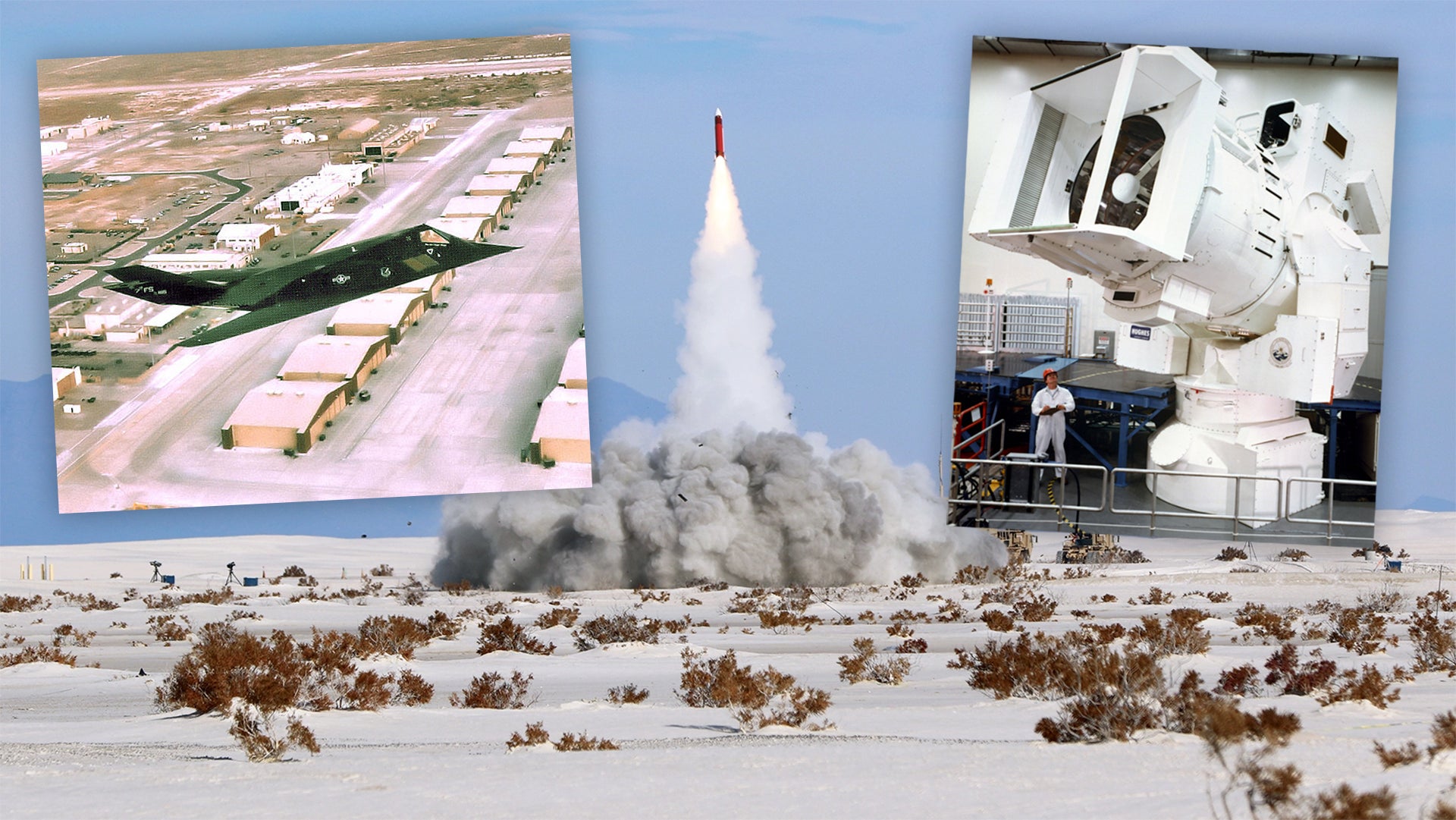In the early 1990s, White Sands Missile Range went from belonging to Naval Sea Systems Command (NAVSEA) to Naval Air Systems Command (NAVAIR), which meant White Sands became part of China Lake, and my company’s support contract was extended to the Naval detachment there. Until that point, White Sands had petty officers running its information technology at the main White House building for the command. The range lacked any true, dedicated technical support — hence the job I applied for. Of course, with me being in-house and a known quantity, I got the job rather quickly. I was told New Mexico was a great place to live, and I would love it there.
My wife and I flew out of Ontario, Calif., to the closest airport to White Sands, which is in El Paso, Texas. For those who are from small towns, landing in El Paso for the first time is a real treat. I was immediately alarmed about what I had gotten myself into from seeing the area for the first time. I was used to being moved around all my childhood and had been to many places, but, after years of working at Naval Air Weapons Station China Lake, which you can read all about here, I was now acclimated to the small population of 35,000 in Ridgecrest. This was a little jolt that Toto wasn’t in Kansas anymore.
From there we went to Las Cruces and got a room for the night.
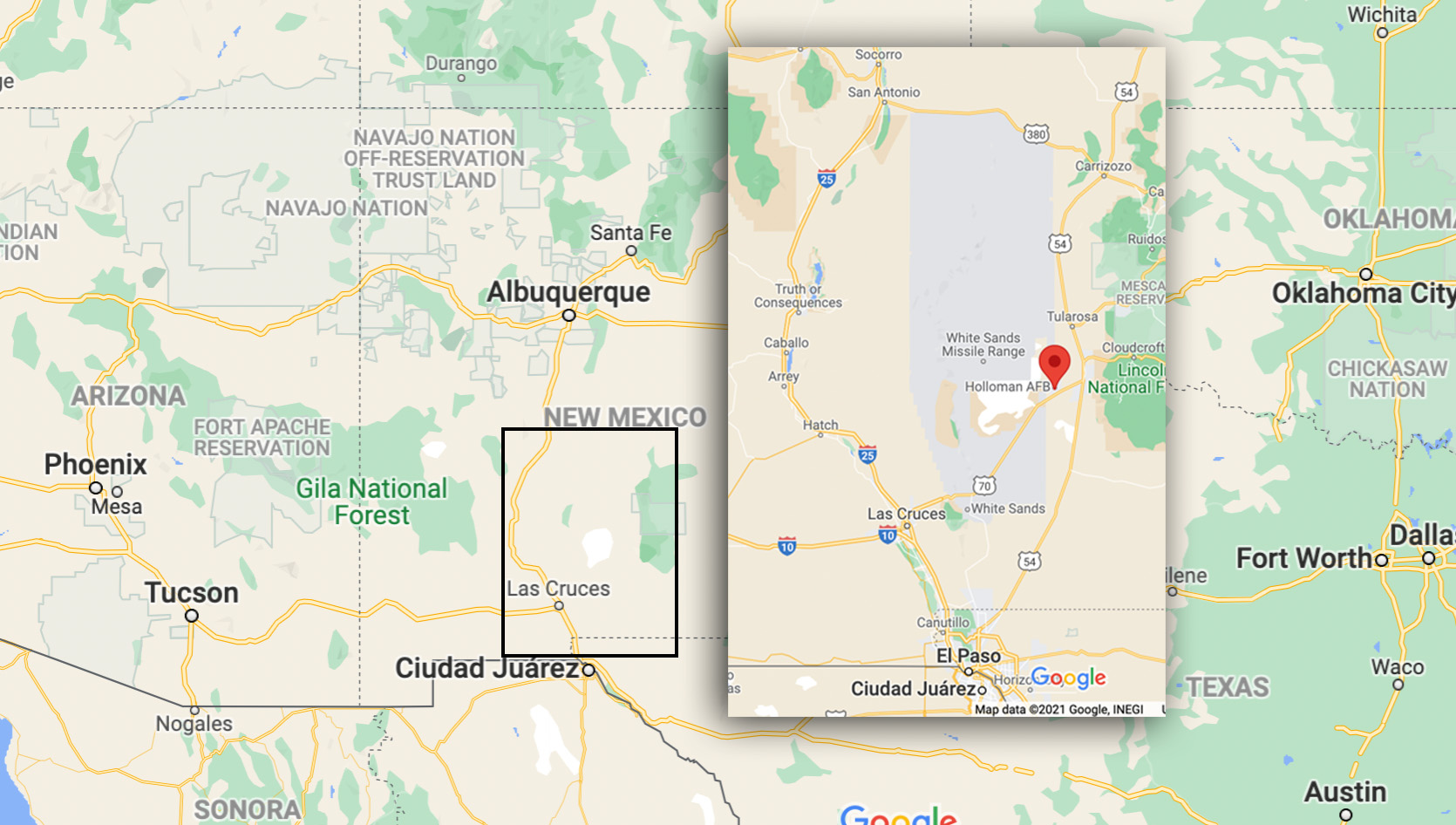
We were not really interested in living in Los Cruces and had never commuted more than 15 minutes for a job in our lives. We were told that, if we asked the Army command sweetly enough, they might let us live in officer family housing on the base. The Army agreed and set us up. The cool part of it was they also gave us full access to the post exchange (PX), commissary, and the base schools. We were set and never needed to leave the base even for necessities — which later kind of became a curse.
We went back to Ridgecrest, packed up our house in a U-Haul, said our goodbyes, and made the trip to New Mexico.
Arriving At The Base
White Sands Missile Range is nestled on the east side of the Organ Mountains, about 27 miles from Las Cruces on US 70. To the left of the gate is a neat museum that showcases many of the things tested at White Sands, from captured German V-2 rockets to the first atomic bomb. There are static stands with all types of weaponry, including some interesting flying-saucer-looking things that some claim are what was seen in Roswell instead of a crashed alien spacecraft. Rolling up to the front gate, you get your usual gate-guard check-in scenario to be allowed access to the base.
The White Sands complex is quite large and inhabited mostly by the Army, but there also is a small Navy post where I would be working, plus some NASA facilities. There were no other contractors from my organization on-site, so I was pretty much the one and only to start.

As with many other naval installations, the White Sands command building is rather old. My wife and I met just about everyone in the building, including the petty officer who was holding the current computer infrastructure together by a shoestring. He was older and pretty close to retiring, and he didn’t take to me very well at first, but, eventually, I changed that.
The network infrastructure was rather dismal, just a few old Mac servers. One of them ran a version of Mail for Mac even as the rest of NAVAIR was switching to Microsoft Exchange. Half the rooms weren’t even wired for Ethernet at the time and used Phonenet adapters for Appletalk communication. As a tenant on an Army base, the Navy piggybacked off the Army’s networks for external communication and internet access, which was TCP-based (transmission control protocol) only. The Navy’s Appletalk network wasn’t allowed on the Army’s networks. The whole command definitely needed a modernization effort, which was right up my alley.
The first thing I did after getting settled was a tour of the locations where I would be working. I was headquartered at the command building, but there were outer locations to support as well. Heading out Nike Road took us on a journey to the Missile Assembly Facility (MAF), and farther down the road where the Desert Ship and LC-35 launch complex are. Navy missiles and the NASA Black Brant sounding rockets are tested there. Farther still was a little shop that maintained the orange-colored Firebee target drones.

Outside the complex and some distance down US 70 is the High Energy Laser Systems Test Facility (HELSTF) complex, which houses a huge laser designed to fry unsuspecting objects out of the air (more on that later). And still farther down the US 70 is Holloman Air Force Base, which at the time housed all the operational F-117 combat squadrons.
Missile Assembly Facility
When you reach the MAF, you are greeted by a rather large building resembling a warehouse surrounded by a tall security fence with barbed wire and rotating warning lights every 50 yards to signal “Stay away!” when a missile was being assembled or tested. The entrance gate is located on the east side of the fence. The parking lot was a long walk away from the gate and building. Taking the tour of the facility is rather surreal, with big assembly stands in an open area, and everything positioned in a precise manner. Everything — from the walls to the doors — is blast-proof. There was even a blast-proof glassed-in control room facing into the area for testing rocket-propelled flying-death contraptions after they had been assembled. The area was clean enough to be a NASA probe assembly room.
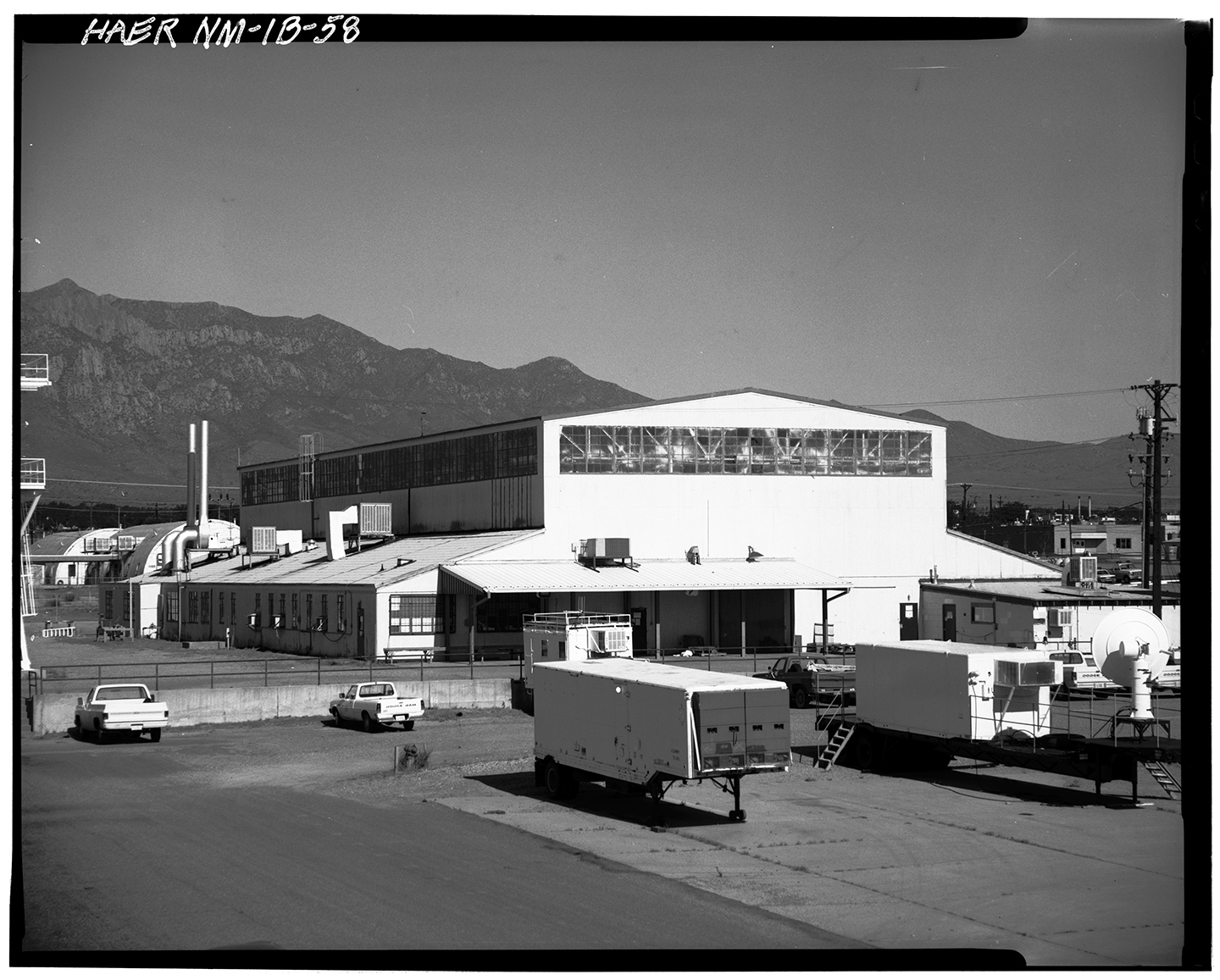
The most striking thing in the building was an 8-inch-wide copper grounding bar that ran all along the walls within the building. Apparently, it is very necessary for you and whatever you are working with to be strapped to this bar when putting together missiles or rockets. If you aren’t grounded properly and there is a lightning strike in the area, or you are unfortunate enough to static out when working around live missiles, you and the whole place could end up a giant grease spot in the middle of the desert.
My first time visiting this facility alone to perform job duties was pretty exhilarating. I had set up a new PC and was delivering it to the MAF. When I approached the compound, the gate was open and the lights weren’t flashing, so I drove right in rather than huffing this thing 100 yards from the parking lot. A rather angry-looking lieutenant commander came flying out the door proclaiming that my damn truck shouldn’t be there, and if I didn’t immediately move it back to the parking lot he was going to get the forklift and move it himself. Having been around the salty Navy types a lot, I casually glanced over at him while I was unloading the computer and informed him that, if he came anywhere within 50 feet of my truck, it would be the last thing he did. He turned bright red, huffed and puffed, and told me to hurry it up.
I was a contractor, not one of his enlisted guys, so he knew there was very little he could do about it at the moment. Also, that guy had probably never in his life had someone stand up to him like that, and he was so impressed, we became best friends for the duration of my stay.
I love making friends like that.
LLS-1 – USS Desert Ship
The Desert Ship, built in the 1950s, was a very interesting place to behold. It’s constructed of thick concrete, like a bunker, in case an unfortunate accident occurs. Inside at the time was a variety of equipment to launch missiles that replicated what would be on a real ship. I’m pretty sure most of this older stuff is gone by now, but, in my time, the room still held equipment that used old school vacuum tubes! I was flabbergasted seeing this.
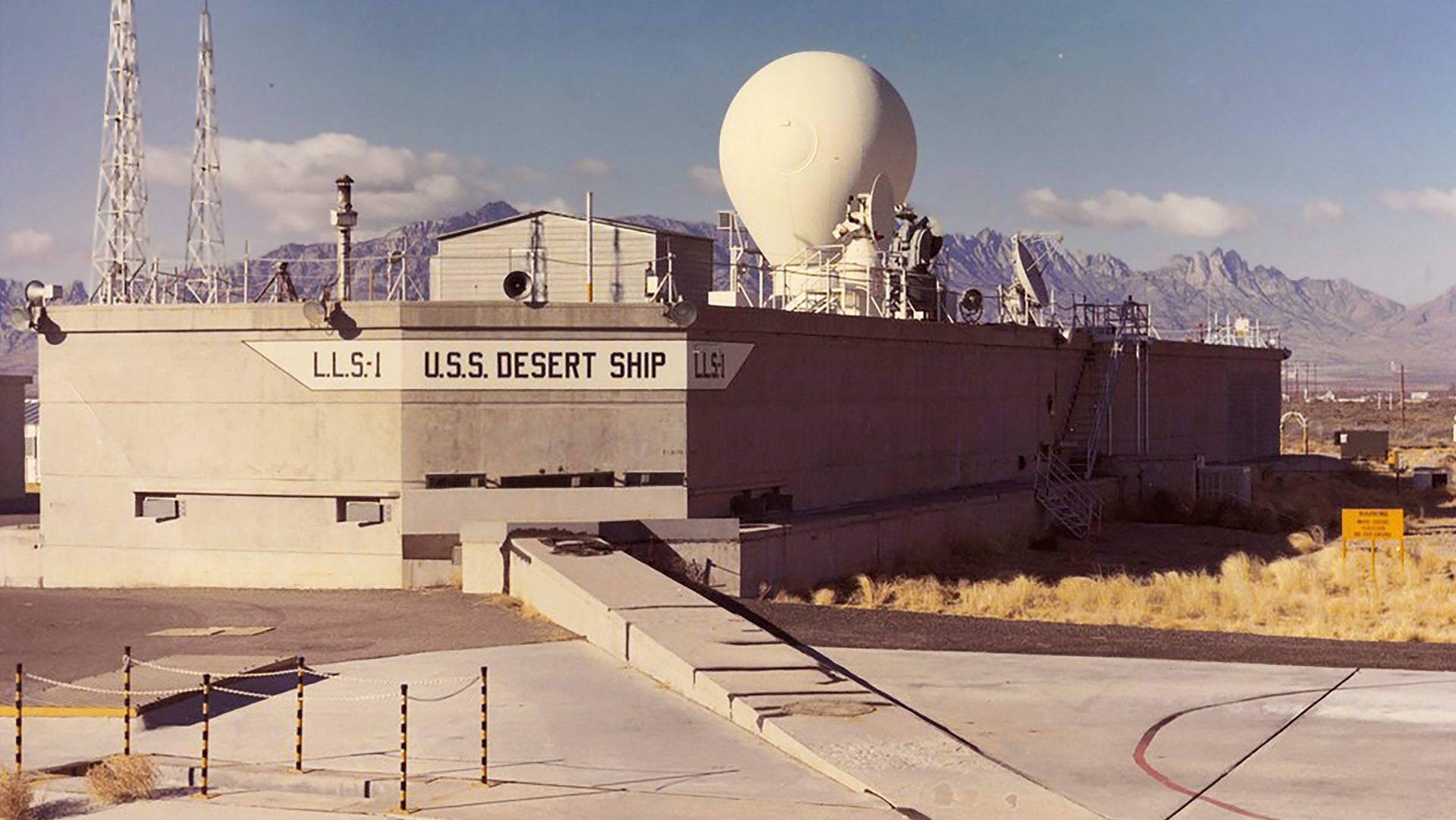
There was also various recording equipment for testing purposes. Then, facing the launcher, was the launch control room, which contained various screens, fun buttons, and little tiny windows where you could see the launcher. It was a complete mix of old and new, and the guys that were on duty there knew their stuff inside and out.
Outside was a vertical launcher located a little distance away from the main complex, connected via a long tunnel. I recall having a “pleasant” afternoon being claustrophobic in that tunnel while running cables one day.
At the time we were there, Standard Missile 2 was the hot item the Navy was testing. We actually had the pleasure of watching an early morning launch and intercept by the SM-2 right from the front door of our house. It was pretty slick watching it do spirals trying to scrub speed and then going on to kill its target. The Navy tested other weapons at that time, too: the RIM-116 Rolling Airframe Missile (RAM), Tomahawk cruise missiles, and the Sea Sparrow missile, among others. We only got to witness the one SM-2 test during the short time we were there, unfortunately.
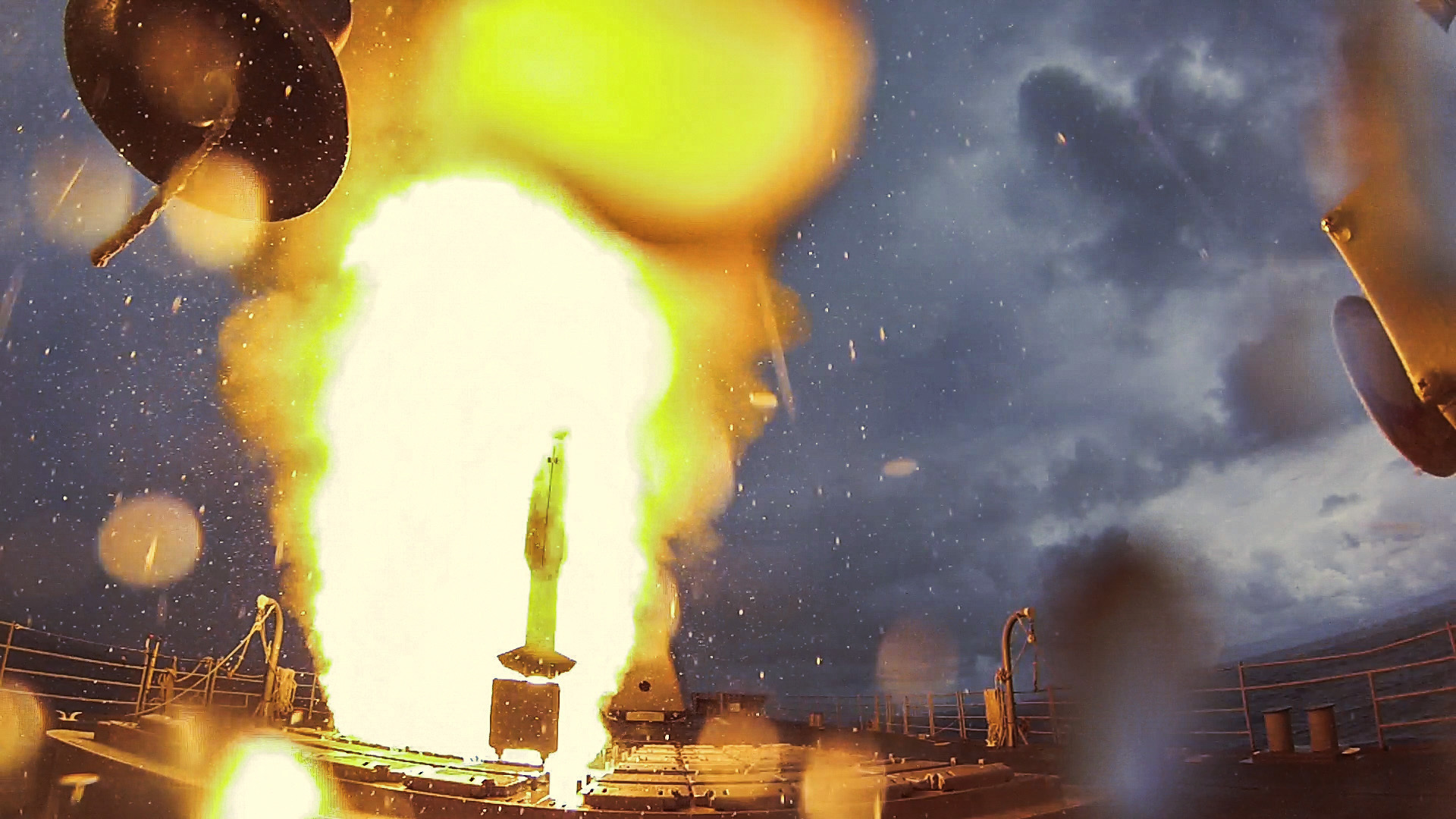
High Energy Laser Systems Test Facility
The most amazing location was HELSTF.
HELSTF is located in between White Sands and Holloman on US 70. This compound houses one of the most powerful chemical lasers in the world. Nobody I knew had any idea how powerful — because that was top secret. Unless you know what you are looking for, you will drive right past the entrance road to get there. It’s not a highly publicized place, located far off the highway.
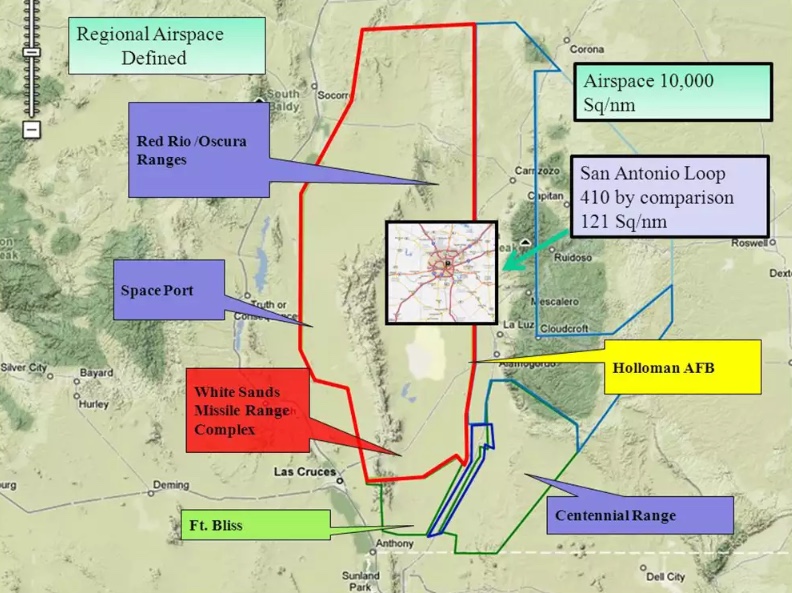
The complex has various strange-looking buildings in different places connected by above-ground pipes with steam coming out of them in spots and HVAC farms all over the place. On my initial tour, I was told by our guide that in the future the whole complex setup would be shrunk down to fit on destroyers.
We entered the multistory building where the Mid-Infrared Advanced Chemical Laser (MIRACL) system is housed. What can be seen on the bottom floor is nothing short of astounding. I recall many pipes and hydraulic rams connected to a huge moving wall that had channels in it for the mixture of whatever chemicals and energy to travel through on its path to the laser emitter. Apparently, this was to ensure the pathways inside were able to be inspected and cleaned when the two halves were separated.
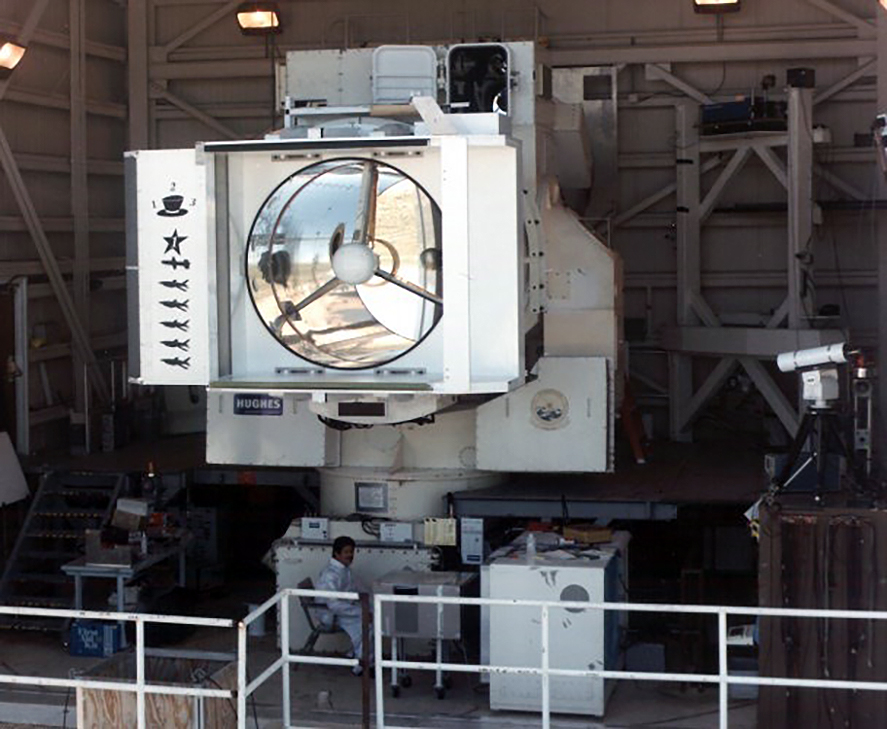
Going up to the second level, we found mirrors in cordoned-off areas. I assume — from the huge “DANGER!” signs everywhere — that’s where the energy flows from the bottom level. You probably would not want to be around those areas when this thing lit off or you would be incinerated instantly. The mirrors appeared to bounce the beam up another level that we didn’t go to.
From the outside, the building doesn’t look like much — until the whole structure actually starts to move backward. What gets exposed after the building moves is a giant maneuverable laser emitter. There are several missile- and drone-kill markings on it, signifying what this thing has brought down in testing.
Not too long before we arrived at WSMR, the MIRACL shot at a drone, in a test. Attached to the bottom of the drone was a two-inch-thick steel diamond plate. The plate was proudly displayed in the lobby, a melted hole about two feet in diameter in the middle of it. I remember thinking, “This is some serious Star Wars shit right here.”
HELSTF has had its share of ups and downs over the years. At the time we were there, the entire complex was pretty much shut down because TRW (the contractor that built it) had their contract expire. Nobody else knew how to run the thing, so it was dormant. There was talk about using the laser system to recharge satellites, but I guess it eventually was shut down for good.
NASA
LC-35 is where NASA launches sounding rockets to test things in low-earth orbit. One of the NASA guys worked in the main shop with us and basically was the event recording and AV person for the launches. He had a need for a heavy-duty Macintosh with AV capabilities so he could edit launch movies and recordings from cameras attached to the rockets. He used it to stitch together a video of various scientific atmospheric reentry test instruments dropped from a rocket for the Mars lander test that took place when we were there. The video was mainly made for the Wallops Flight Facility in Virginia, but, on some copies, he dubbed in music from Pink Floyd with the video.
Again, very cool to be remotely involved in interesting science, even if I was part of it only indirectly.
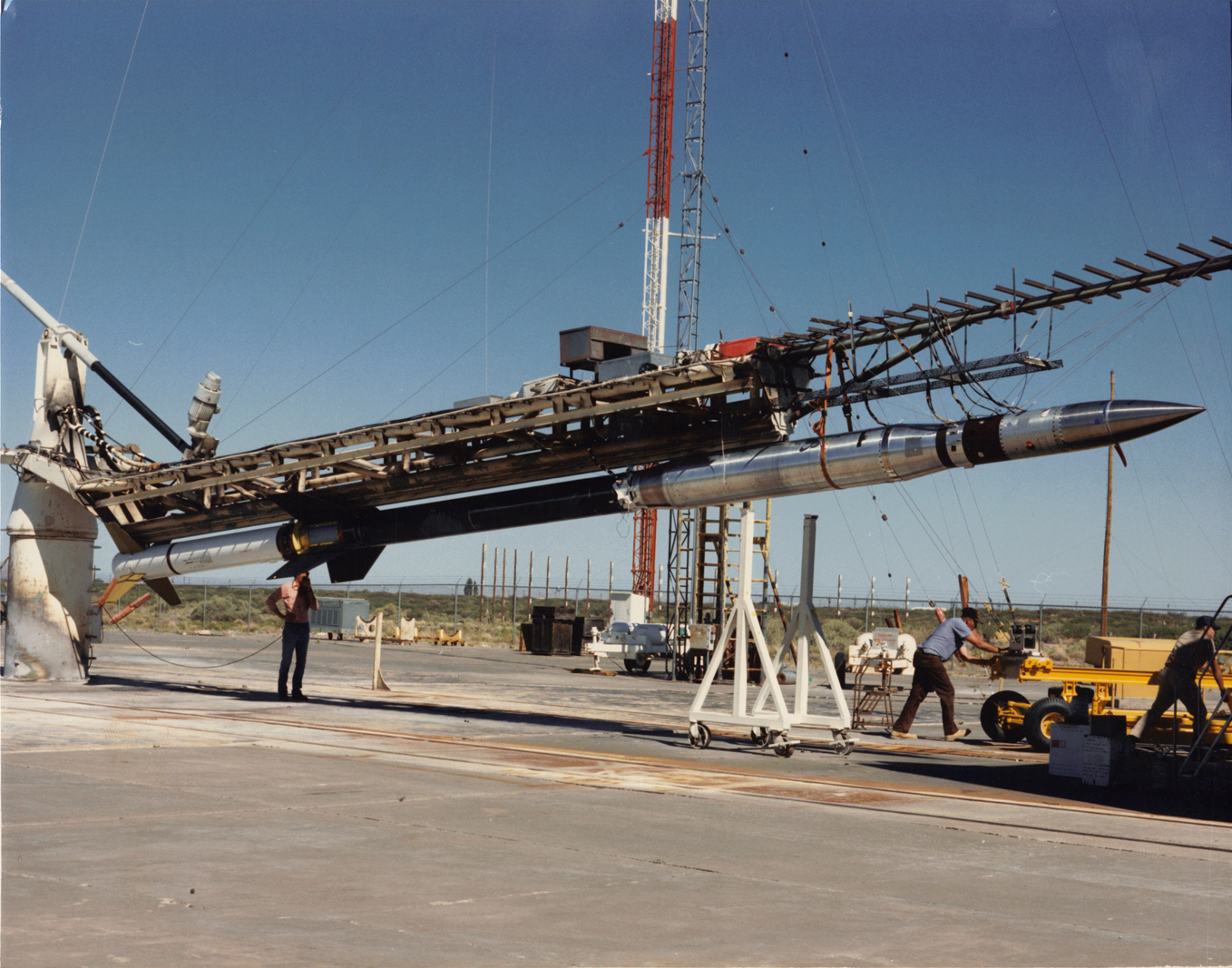
Down The Road At The Air Force Base
Outside of work, the White Sands community was really involved in kids’ sports. White Sands teams often played against those of nearby towns, as well as a team at Holloman AFB. One day, we got an opportunity to go there for my son’s baseball game. Of course, there were F-117s all over, as the baseball diamond wasn’t far from the airfield. They were taking off and landing the whole day. So I was obviously ecstatic to be around cool aircraft again, because there wasn’t much to be seen from the missile range.

Home On The Missile Range
Like China Lake, WSMR’s personnel are a very tight-knit group. I knew just about everyone tied to the installation and, for the most part, we were one big family. My wife eventually got hired on and worked at the command building with me. She had worked as a civilian at China Lake for a number of years, so she fit right in, and everyone loved her.
At one point, everyone who lived at the facility had to take an explosive recognition course with the explosive ordnance disposal (EOD) guys. Apparently, someone was driving out on the road that takes you from White Sands to El Paso and decided to stop and take a stroll. They found something on the ground. Not thinking, they picked it up. It was unexploded ordnance, and — of course — it exploded when they grabbed it. EOD reminded us to treat the whole entire facility as an active bombing range because sometimes undetected strays could be found. Comforting.
The range is also inhabited with wild Oryx, a species of large antelope that have very long, sharp horns. They are not native to North America (they come from Africa), but the missile range experimented with introducing exotic animals in the 1960s, and now they are all over.

Oryx are not very nice. One day, we passed a family pulled off the side of the road that had stopped to see one. Apparently, they were trying to feed it when it promptly decided it didn’t care for them much and chased them back to their minivan. It then proceeded to run its horns completely through the van’s passenger door, much to the dismay of its terrified passengers.
Working at White Sands was really fun, but, in hindsight, making the decision to live on the base was a pretty bad idea for my family and me. Though it was cheap, the living conditions were often rather isolating. No radio relays reached into the valley, so you pretty much were locked out of any current musical entertainment. The housing regulations and restrictions were rather strict regarding maintaining your yard, curfew, animal control, etc. — and rightfully so; it’s a military base. But we had a neighbor who was batshit crazy and liked to call the cops on me just for sitting on my porch in the evenings. My family wasn’t happy with it, and we began to discuss if maybe it was time to go back to China Lake. But by that time, the people in the command building were head over heels about what I had been doing and really didn’t want me or my wife leaving. I was told they would rather shoot me than see me leave.
Again, comforting.
We had a change of command, and the new captain was impressed with my support but wanted to know what type of training I had. I told him self-taught, and he said that wouldn’t fly and requested my employer to get me classes to get Microsoft Systems Certification. I saw this as an opportunity to market myself better to get another job and get out of there. I studied and took tests every two weeks to get my certification. There were days I didn’t see daylight, because all I did was study the whole time.
Within eight weeks, I was certified. Not long after, I landed a job at Lake Tahoe, of all places. I didn’t want to leave a job associated with the DOD, but we definitely didn’t want to stay there any longer.
After what my wife terms as exactly “2.4 years,” we announced we would be moving on. We made some pretty cool friends, not only with the enlisted guys, but also with many of the officers. The command threw us a party and gave us a few traditional mementos usually reserved for military personnel, which made us feel very much part of this unique team. It was a great job, and I would miss the camaraderie greatly.
Editor’s Note: This article was updated on 12/22/21 to correct references to US 70 that originally used “I-70.”
Contact the Editor: Brian@thedrive.com.
